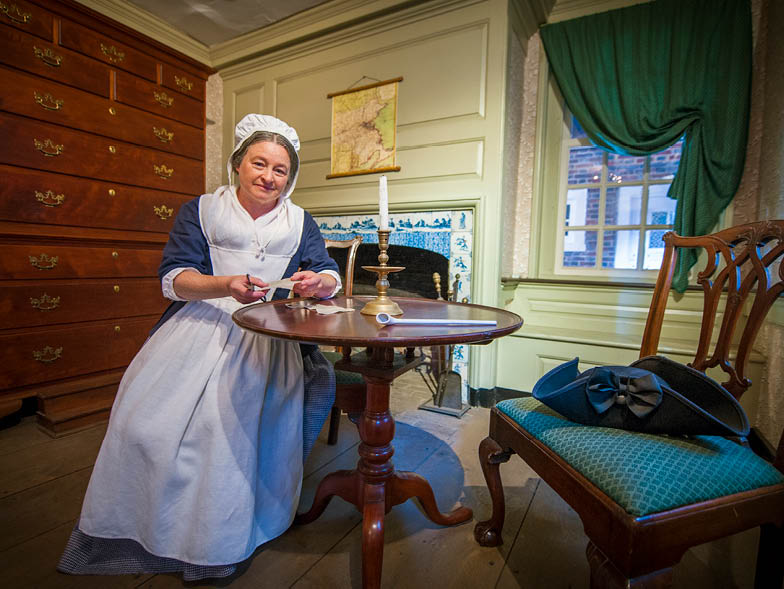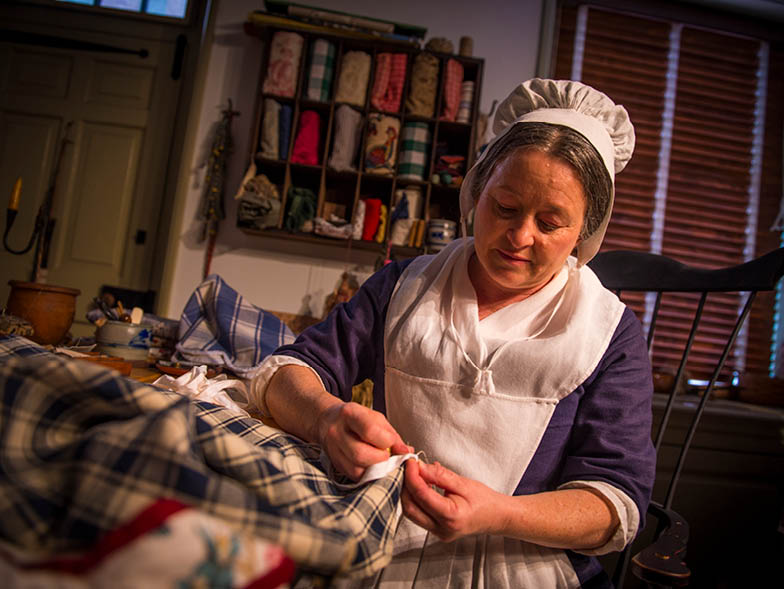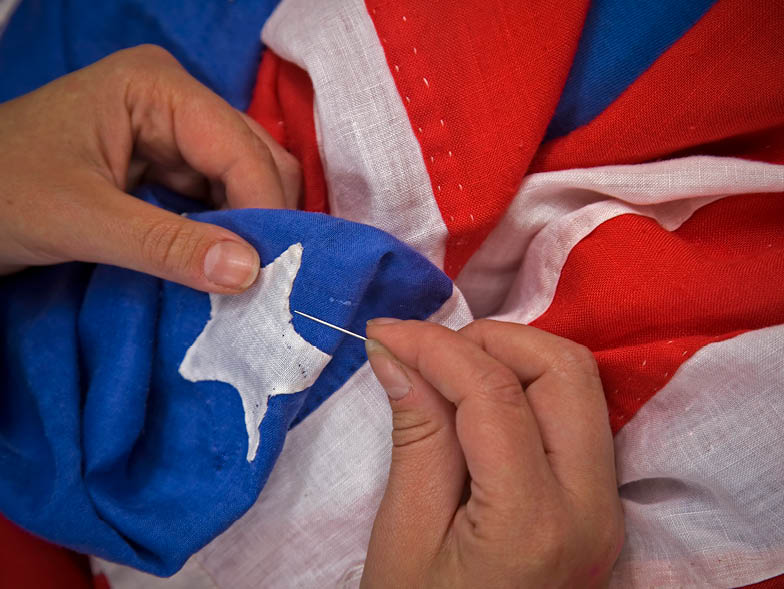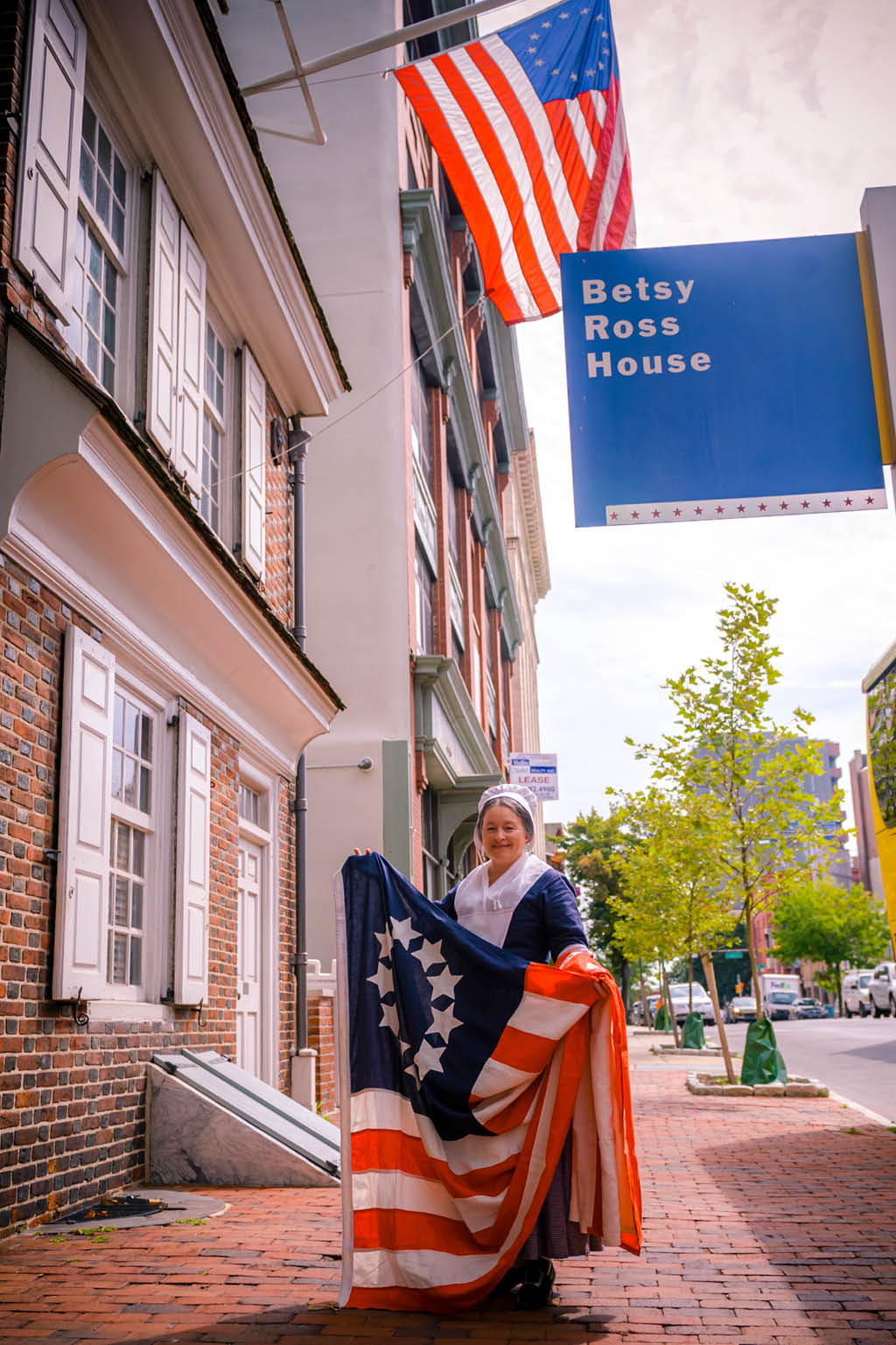The Fabric of America
Most days, it feels like I am on autopilot as I make my commute home from work, raveling down the same roads, past the same shops and buildings, alongside the same group of cars that make this same trek day in and day out. But every once in a while, my attention falls upon this American flag that streams forty feet high in the sky—a familiar landmark that metaphorically stops me in my tracks every time I notice it. There’s just something powerfully visceral about this piece of fabric gallantly waving its broad stripes against the backdrop of the wide-open sky that triggers a universal reaction of patriotism I am sure many Americans can relate to.
As my heart instinctively fills with appreciation whenever I’m fortunate enough to come across this flag in my travels, I am also reminded of the people at the Betsy Ross House, who are busy celebrating the American flag’s heritage on a daily basis.
Located in the historic district of Philadelphia, Pennsylvania, the staff at the Betsy Ross House diligently preserves the well-known and loved story of the now famous upholsterer who stitched the first stars and stripes into the colorful fabric of America’s rich history. From opening up the doors of the 275-year-old building that Betsy once called home so that people can be immersed in the sights and sounds of the eighteenth century, to inviting visitors to linger longer in the upholstery shop so they can talk to Betsy for a personal account of her work, life, and role with the flag, the team keeps our nation’s history relevant while also focusing on its overarching goal of helping people come to their own conclusion to the question, “Was Betsy ordinary or extraordinary?”
To reach your own conclusion, the Betsy Ross House invites you to celebrate the story that has made Betsy Ross a national historical legend.

Stitching the Story Together
Betsy’s story begins with the establishment of her career. After finishing a formal education at a Quaker school, young Betsy entered into an apprenticeship with John Webster, an accomplished upholsterer who left his career in London to relocate to Philadelphia, the most chic and cosmopolitan city of the New World at the time. During this experience, Betsy networked with important connections—a number of whom were the future Founding Fathers of the nation—before forming her own upholstery business alongside John
Ross. The husband-and-wife duo carried over the prestigious clientele of powerful, wealthy people to their up-and-coming business and were well on their way to an incredibly lucrative career.
This blossoming path took a turn for the worse during the Revolutionary War, which claimed her first husband’s life and left Betsy struggling to make ends meet. Fortunately for Betsy, her unclein-law, George Ross, was well connected and a member of the Flag Committee, along with Robert Morris, a financier of the Revolutionary War, and George Washington. It is believed that because of her relationship with her late husband’s uncle, Betsy was commissioned to make the first American flag.
The legend holds that Betsy was working in her upholstery shop one day when these three incredibly important men came through the door. She took them to the parlor of the house, where they could have a private meeting to discuss making a flag. The men unveiled the concept they had come with, at which time Washington asked if Betsy could make a flag from the design. She responded, “I do not know, but I will try.” Betsy took the concept, adjusted their six-pointed stars to five-pointed stars, and presented the finished prototype a few weeks later. On June 14, 1777, the Continental Congress adopted the Stars and Stripes as the official national flag, and the rest is history.

Although this is the story written in the books, no smoking gun directly links Betsy to that first flag. “I would love for somebody to find a receipt that says, ‘Payment to Elizabeth Ross for the creation of the first American flag.’ But it doesn’t exist, unfortunately,” explains Lisa Moulder, director of the Betsy Ross House. “But we have tons of circumstantial evidence to give credibility to the story. First of all, she was an upholsterer, which means, in addition to her normal services, she also made flags. Especially during the Revolutionary War, people weren’t thinking about fashionable fabrics for their homes. So she had to make her living another way, which would’ve involved using her skills as an upholsterer to make military supplies.
“In addition, Betsy Ross’s daughters, grandchildren, and one of her nieces all gave sworn affidavits in the late nineteenth century, recalling Betsy’s story of her visit with George Washington. They all said that they heard it from her own mouth, and the affidavits tell almost identical stories about the Flag Committee visiting Betsy’s shop. And then, on May 29, 1777, the State Navy Board paid Betsy Ross a large sum of money for making ships’ naval colors—the transaction conveniently occurred two weeks before Congress adopted the Stars and Stripes as our national flag.”

But the most powerful piece of evidence that connects Betsy to the Flag Committee comes from a recent discovery at Mount Vernon, George Washington’s plantation home in Virginia. It’s been long understood that Betsy’s relationship with her late husband’s uncle is what most likely led her to be considered by the Flag Committee for this opportunity. However, a handwritten ledger shows that the Rosses were hired to make bed curtains for Mount Vernon by George Washington himself while he was in Philadelphia for the First Continental Congress in 1774. “Betsy’s family had long reported that she knew George Washington, but we didn’t have any proof other than the family’s memory. But to have the curators from Mount Vernon acknowledge that, yes, they have it in their own records that George Washington had written down he had paid the Rosses this sum of money to make bed curtains,” Moulder details, “that’s, to us, one of the strongest pieces of evidence that we have. It establishes that Washington was familiar with Betsy’s work and knew she was perfectly capable of creating the flag.”
Despite the lack of conclusive proof, all the signs point to Betsy as being an ordinary woman who played a part in this extraordinary moment in our nation’s history. “When you look at her life, she was probably just an ordinary woman,” adds Moulder. “She had a job and did what she had to do to make ends meet. She wasn’t famous in her day and certainly was not wealthy, which makes you think that she was an ordinary woman in her time. But today, we consider her an extraordinary woman for her character and the role she’s played in history. It is our hope at the Betsy Ross House that people will form their own opinions of her. Do you think she was ordinary or extraordinary?”
For more info, visit historicphiladelphia.org.






















